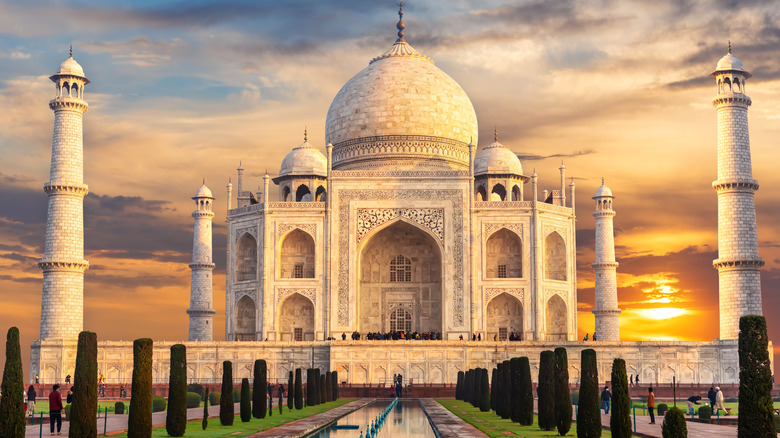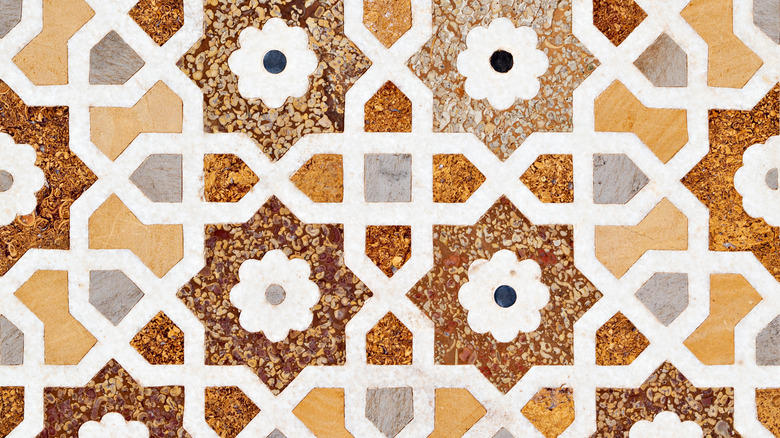The Real Reason It Took 22 Years To Build The Taj Mahal
Located in Agra, India, the Taj Mahal is a UNESCO World Heritage Site and one of the world's most iconic structures (via Britannica). Despite its palatial appearance, the Taj Mahal is in fact a mausoleum. According to ThoughtCo., it was commissioned by Mughal emperor Shah Jahan for his wife, Mumtaz Mahal. As the story goes, Mumtaz Mahal was his third and favorite wife who died while giving birth to their 14th child. The emperor was said to have cried for eight days, and in his grief, decided to build the mausoleum in her memory.
Per History, construction began in 1632. No expense was spared, as the Mughal empire was incredibly wealthy. As a result, the Taj Mahal is made of pure white marble and semi-precious stones. Likewise, the interior and exterior are decorated with inlay work, calligraphy, verses from the Quran, and more (via IndianSaga). Shah Jahan wanted construction to be speedy, but the opposite occurred. Due to obsession and perfection, the Taj Mahal would not be completed for another two decades.
The Taj Mahal required 20,000 workers from different countries
According to Travelogy India, the Taj Mahal consists of five structures, including the main gateway, garden, a mosque, a main mausoleum, and a rest house. The tomb in the center stands 81 feet high, and the garden, rather than surrounding it, leads up to the tomb. Asia Highlights reports that four minarets, which are symbolically significant in Islam, line the Taj Mahal. With its perfect symmetry and use of white marble and red sandstone, its intricacies are beyond opulent. Per PBS, architects and artisans were brought to Agra from all over the world, including Baghdad, Turkey, and Persia, to satisfy Shah Jahan's artistic obsession.
In total, 20,000 workers, both skilled and unskilled, were hired (via ThoughtCo.). The white marble, sandstone, and the semi-precious stones all came from hundreds of miles away. It reportedly took 1,000 elephants to haul the marble specifically to the construction site. A 10-mile ramp was later built so that these materials could be towed to the top of the dome.
History states that Shah Jahan made plans to build a second mausoleum, for himself, across the river from the Taj Mahal, but that never happened. One of his sons with Mumtaz Mahal overthrew his father and imprisoned him. When Shah Jahan died, he was buried next to Mumtaz. Per Britannica, the Taj Mahal is visited by millions of tourists each year. However, India's pollution is slowly causing damage to the white marble.

